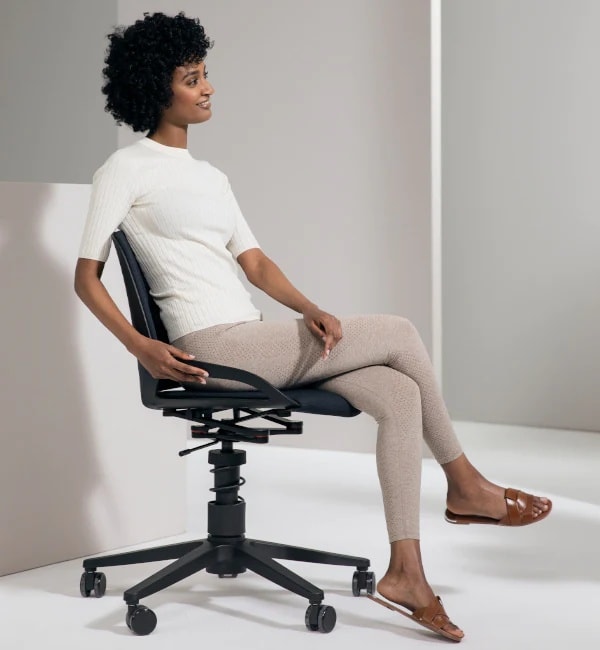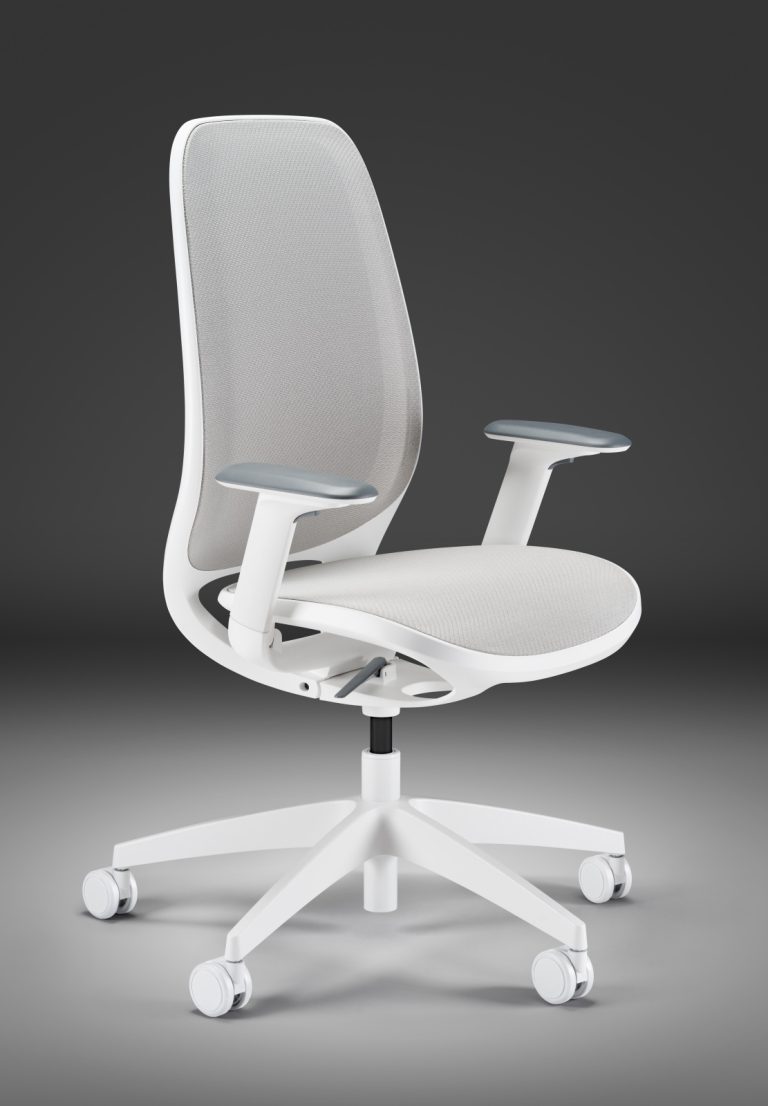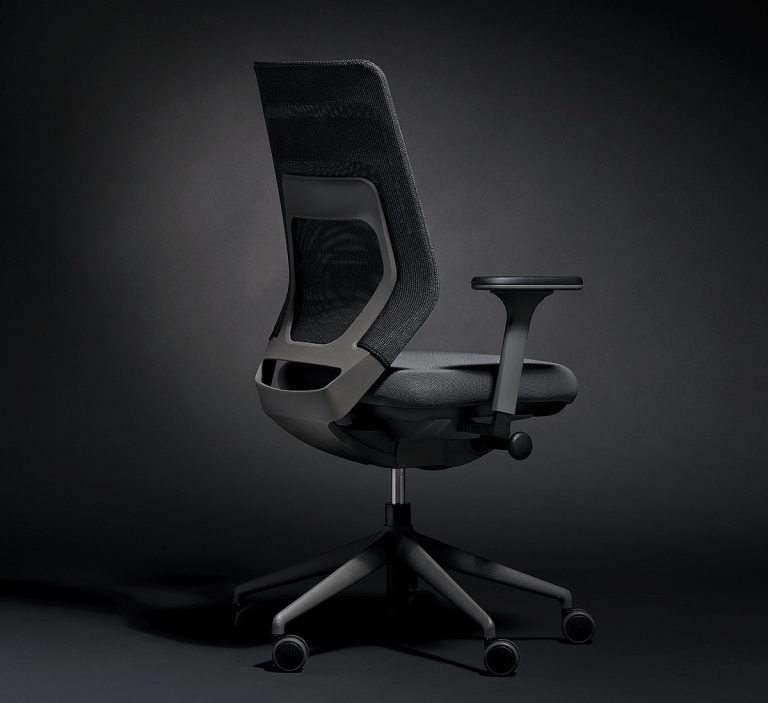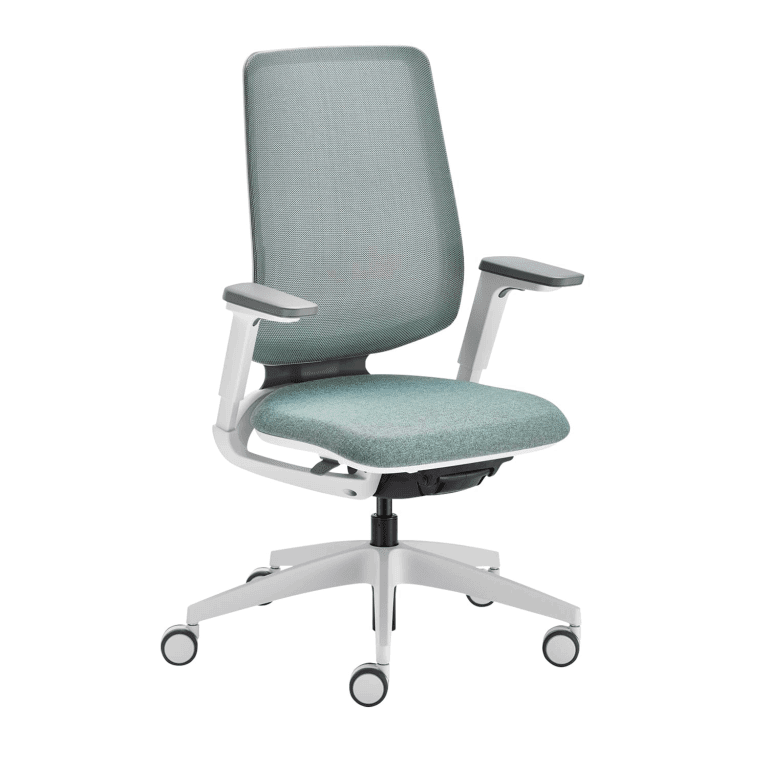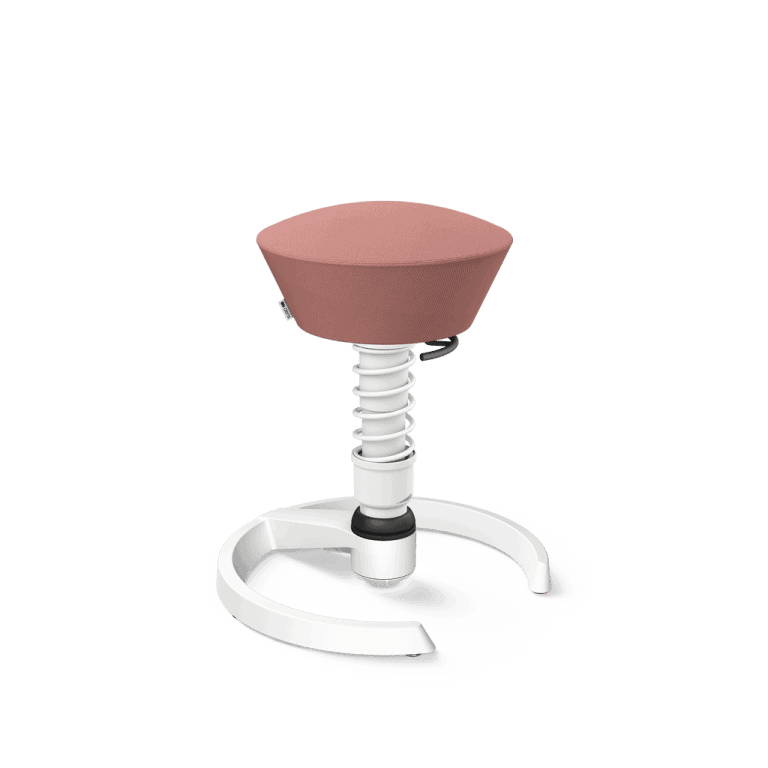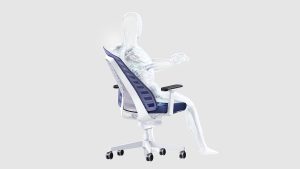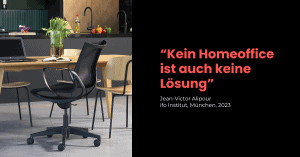Photocredits Cover picture: ©Interstuhl (swivel chair PUREis3)
Swivel chair basics - It's all about movement!
As of 2022, there are around 18 million VDU and office workplaces in Germany, which is around 50% of all employees, and the trend is rising. They all have one thing in common: they spend a lot of time sitting down!
Our human body is actually made for movement; sitting in the same pose all the time is not conducive to good health. Modern office swivel chairs try to provide the best possible remedy. In our little swivel chair 101, we therefore dedicate ourselves to these little mechanical marvels!
Why exercise at all?
In short, our spine needs sufficient movement so that our intervertebral discs can be supplied with sufficient nutrients. As intervertebral discs are not supplied with blood, they work like a sponge: when compressed, they release used nutrient fluid and when relieved, they absorb fresh nutrient fluid. Plenty of regular exercise therefore promotes the metabolism of our intervertebral discs, whereas one-sided pressure from sitting motionless is not beneficial.
Movement despite sitting
Ergonomic office chairs enable "dynamic sitting" and are therefore designed in such a way that they allow our bodies as many degrees of freedom as possible when sitting. In the mechanical sense, "degree of freedom" refers to the possibility of independent movement in different axes and dimensions.
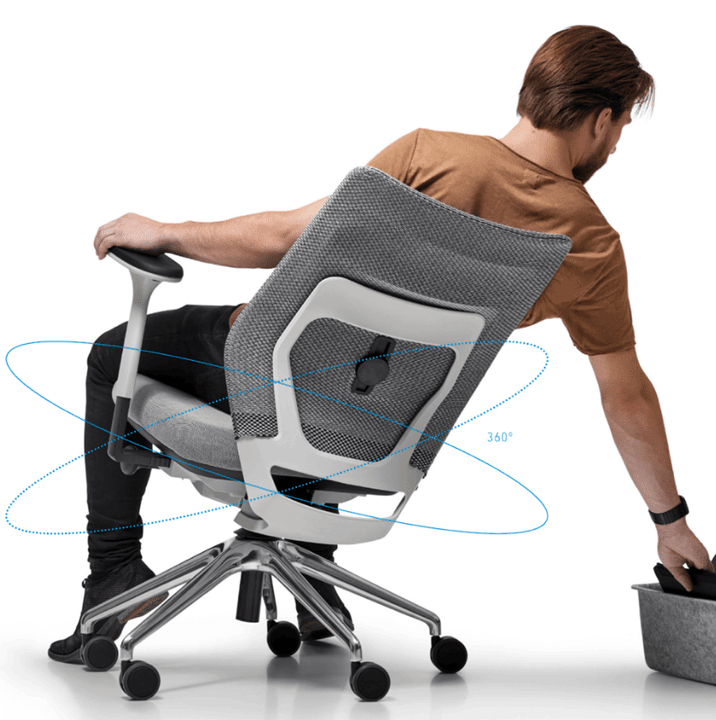
Swivel chair "Asiento" from ©fm Büromöbel
Which component enables which and how many degrees of freedom?
In the following table, we have summarised the components of good office chairs that enable the freedom of movement just mentioned.
The principle can be illustrated very well using the example of the multi-movable armrests in the following video:
Video ©Interstuhl (Swivel chair EVERYis1)
| Component | Degrees of freedom | Description of the |
|---|---|---|
| Rollers | 2 (x- and y-axis) | The typical swivel chair is on castors. This favours movement along the two directional axes (forwards/backwards or left/right). Just a few centimetres of movement with the help of castors changes the load profile for our spine and is therefore beneficial for its metabolism. Office swivel chairs with castors therefore have a clear advantage over chairs with glides! |
| Gas strut | 2 (height + rotation) | The gas pressure spring fulfils two important roles: swivelling around its own axis and height adjustment, i.e. the suspension and damping function. Height adjustability is essential for adapting the swivel chair to your height. If this is missing, a very essential ergonomic function is not provided. Office chairs that swivel but are not height-adjustable are typically found in meeting rooms, but are not made for permanent work at a desk. |
| Seat surface | 3 (seat depth, inclination, tilt) | The seat of a swivel chair does not have to be rigid: the seat depth (i.e. the distance to the backrest) can be individually adjusted on many office chairs. High-quality swivel chairs also have a so-called seat tilt adjustment, which allows the seat surface to be tilted by a few degrees. Chairs with a mechanism that also allows the user to tilt slightly to either side are particularly movement-enhancing - this enables particularly dynamic sitting, often advertised by manufacturers as a 360° or 3D mechanism. |
| Mechanics | 2 (tilting, opening angle) | The mechanism of an office chair determines the tilt options of the backrest. - Simple rocking mechanism (backrest and seat are rigidly connected, but can be tilted) - Permanent mechanism: The backrest can be tilted backwards in relation to the fixed seat surface - Synchronised technology: the seat and backrest tilt synchronously in a defined ratio, i.e. the seat surface also tilts, but less than the backrest. Meeting chairs generally have no mechanism and are therefore not suitable for long-term work at a desk. |
| Backrest | 1 (height adjustable) | Backrests are usually ergonomically shaped to accommodate our S-shaped spine. It is therefore important to be able to adjust the backrest to your own height, i.e. to be able to move the height in relation to the seat. |
| Lordosis or lumbar support | 2 (height, depth) | Support elements attached separately to the backrest are also used to support the S-shaped spine - these are ideally adjustable in height and depth (more pressure, less pressure) and can therefore be optimally adjusted to individual requirements. |
| Armrests | 5 (width, height, depth, swivelling, foldable) | Armrests are a small miracle when it comes to manoeuvrability - manufacturers regularly advertise their armrests as 2D, 3D, 4D or even 5D armrests. This refers to the following adjustment options: - Width of the armrest / distance from the seat - Height of the armrest opposite the seat - Armrest depth / sliding the armrest forwards and backwards - Swivelling / Adjustable armrest angle - Folding down / folding away or folding down the armrests |
| Headrest | 2 (height, inclination) | If the swivel chair is equipped with a headrest, there are usually two additional degrees of freedom / adjustment options: the height adjustment and the tilt angle of the headrest. |
| Free-Form | x | Some office chair models do not fit at all into the rather mechanical concept described so far. For the sake of simplicity, we call them "free form" here. These office chairs do not require a classic mechanism and are made from a single piece of plastic, for example. They get their flexibility and manoeuvrability from the spring forces of the plastic structure - resulting in backrests that can be twisted, etc. |
Total | 19 degrees of freedom | |

